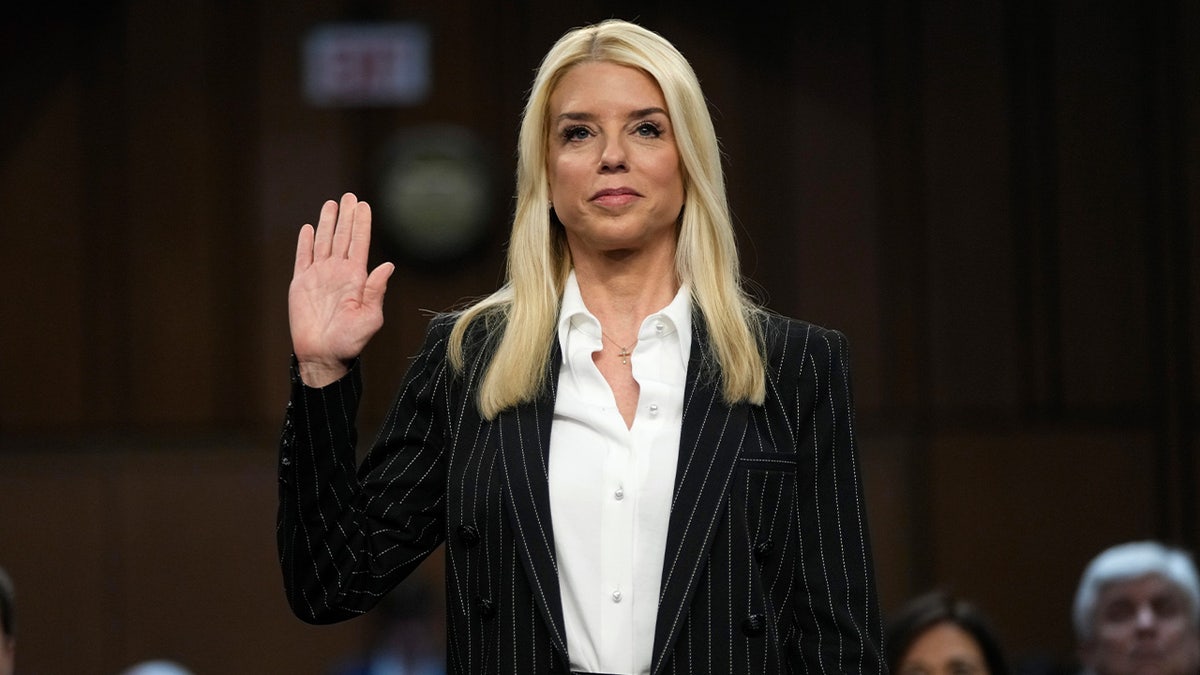The Fentanyl Crisis And Its Impact On U.S.-China Trade Relations

Table of Contents
The Flow of Fentanyl: From China to the United States
The devastating flow of fentanyl from China to the United States is a crucial aspect of the crisis. Understanding this pipeline is critical to developing effective countermeasures.
Chemical Precursors: The Foundation of the Problem
China's role in the production and export of precursor chemicals used to synthesize fentanyl is a significant factor contributing to the crisis. These precursor chemicals, while having legitimate industrial uses, are easily converted into fentanyl by transnational criminal organizations.
- Statistics on precursor chemical exports: While precise figures are difficult to obtain due to the clandestine nature of the trade, studies have indicated a significant increase in the export of certain precursor chemicals from China in the years leading up to the surge in fentanyl overdoses in the U.S.
- Lack of effective regulatory measures in China: Critics argue that insufficient regulatory oversight and enforcement in China allow these chemicals to fall into the wrong hands. The complexities of tracing the supply chain further hinder effective intervention.
- Challenges in tracing the supply chain: The obfuscation of the supply chain, with multiple intermediaries and shell companies involved, makes it extremely difficult for law enforcement agencies to track the precursors from their origin in China to the clandestine fentanyl labs in Mexico and elsewhere.
The chemical process itself is relatively straightforward, making the conversion of precursors to fentanyl alarmingly easy for even relatively unsophisticated actors. This accessibility exacerbates the problem.
Transnational Criminal Networks: Facilitating the Deadly Trade
Transnational criminal networks play a vital role in the trafficking of fentanyl and its precursors. These sophisticated organizations exploit vulnerabilities in global trade and shipping systems to move their illicit goods.
- Examples of successful seizures: While law enforcement agencies have achieved some successes in seizing fentanyl shipments, these seizures represent a small fraction of the overall volume trafficked.
- Methods used to conceal fentanyl shipments: Fentanyl is often concealed within legitimate shipments, utilizing various methods, including darknet markets, regular mail, and shipping containers, making detection challenging. This necessitates advanced technology and international cooperation for effective detection.
- Challenges faced by law enforcement: Combating these sophisticated networks requires robust international cooperation, advanced intelligence gathering techniques, and significant resources. The cross-border nature of the operation presents unique difficulties for law enforcement agencies.
The U.S. Response and its Implications for Trade
The U.S. government has responded to the fentanyl crisis with a range of measures, significantly impacting U.S.-China trade relations.
Sanctions and Trade Restrictions: A Targeted Approach
The U.S. has imposed sanctions and trade restrictions on Chinese entities believed to be involved in the production or trafficking of fentanyl precursors.
- Examples of sanctions: These sanctions can include asset freezes, travel bans, and restrictions on doing business with U.S. entities.
- Their effectiveness: The effectiveness of these sanctions remains a subject of debate, with some arguing that they have had a limited impact on the overall flow of fentanyl precursors.
- Potential unintended consequences on legitimate trade: Concerns exist that these sanctions could unintentionally harm legitimate businesses and negatively impact overall U.S.-China trade relations. This necessitates a precise and targeted approach to minimize collateral damage.
Enhanced Cooperation and Intelligence Sharing: A Necessary Path Forward
Increased collaboration between the U.S. and China on combating fentanyl trafficking is crucial, although fraught with challenges.
- Challenges in fostering trust: Existing political tensions and mistrust between the two countries hinder effective cooperation.
- Potential mechanisms for cooperation: Potential mechanisms include increased information sharing, joint investigations, and the development of shared strategies to disrupt transnational criminal networks.
- Difficulties and diplomatic hurdles: Overcoming these hurdles requires significant diplomatic efforts and a commitment from both sides to prioritize public health above geopolitical considerations.
Economic and Geopolitical Implications
The fentanyl crisis has profound economic and geopolitical consequences, extending beyond the immediate public health concerns.
The Human Cost and Economic Burden: A Devastating Impact
The human cost of the fentanyl crisis is immeasurable. The economic burden on the U.S. is substantial.
- Statistics on overdose deaths: The number of overdose deaths related to fentanyl continues to rise dramatically, placing a tremendous strain on healthcare systems and communities.
- Healthcare costs associated with opioid addiction treatment: Treatment for opioid addiction is expensive, requiring long-term care and support.
- Lost productivity: The loss of life and the incapacitation of individuals due to addiction result in significant lost productivity and economic output.
Impact on U.S.-China Relations: A Strain on Bilateral Ties
The fentanyl crisis is straining U.S.-China relations, impacting broader trade negotiations and other areas of cooperation.
- Increased tensions: The crisis has exacerbated existing tensions between the two countries, leading to increased rhetoric and accusations.
- Potential for trade disputes: The issue has the potential to escalate into broader trade disputes, further complicating the already complex relationship.
- Implications for other areas of cooperation: The crisis could negatively impact cooperation on other issues of mutual concern, such as climate change, cybersecurity, and global health.
Conclusion: A Collaborative Approach to a Shared Threat
The fentanyl crisis presents a significant and shared challenge to both the United States and China. The flow of fentanyl precursors from China fuels the opioid epidemic in the U.S., straining bilateral relations and creating complexities within the existing trade framework. Effective solutions demand a multifaceted approach, including stricter regulations on precursor chemicals, enhanced international cooperation, and a commitment to addressing the underlying drivers of the opioid crisis. Addressing the fentanyl crisis requires a joint effort to strengthen regulatory frameworks, improve intelligence sharing, and promote collaborative efforts between the U.S. and China to disrupt transnational criminal networks involved in the illicit U.S.-China trade of dangerous narcotics. Ignoring this crisis would have severe consequences for both nations, impacting not only public health but also the stability of the U.S.-China trade relationship. We must prioritize collaborative strategies to effectively combat this shared threat and protect our citizens from the devastating impacts of the fentanyl crisis.

Featured Posts
-
 Pam Bondi Accused Of Hiding Epstein Records Senate Democrats Claims
May 09, 2025
Pam Bondi Accused Of Hiding Epstein Records Senate Democrats Claims
May 09, 2025 -
 February And March Elizabeth Line Strikes Affected Routes And Travel Advice
May 09, 2025
February And March Elizabeth Line Strikes Affected Routes And Travel Advice
May 09, 2025 -
 Thailands Economy The Search For A New Bot Governor And Tariff Implications
May 09, 2025
Thailands Economy The Search For A New Bot Governor And Tariff Implications
May 09, 2025 -
 Uy Scuti Release Date Young Thug Offers A Glimpse
May 09, 2025
Uy Scuti Release Date Young Thug Offers A Glimpse
May 09, 2025 -
 Dakota Johnson Melanie Griffith And Siblings Attend Materialist Premiere
May 09, 2025
Dakota Johnson Melanie Griffith And Siblings Attend Materialist Premiere
May 09, 2025
Latest Posts
-
 Former Becker Sentencing Judge Heads Nottingham Attacks Investigation
May 09, 2025
Former Becker Sentencing Judge Heads Nottingham Attacks Investigation
May 09, 2025 -
 Retired Judge Deborah Taylor To Lead Nottingham Attacks Inquiry
May 09, 2025
Retired Judge Deborah Taylor To Lead Nottingham Attacks Inquiry
May 09, 2025 -
 Nottingham Attacks Inquiry Retired Judge Appointed
May 09, 2025
Nottingham Attacks Inquiry Retired Judge Appointed
May 09, 2025 -
 Nottingham A And E Records Accessed Illegally Families Of Stabbing Victims Demand Justice
May 09, 2025
Nottingham A And E Records Accessed Illegally Families Of Stabbing Victims Demand Justice
May 09, 2025 -
 Nhs Data Breach In Nottingham Stabbing Victims Families Demand Answers
May 09, 2025
Nhs Data Breach In Nottingham Stabbing Victims Families Demand Answers
May 09, 2025
